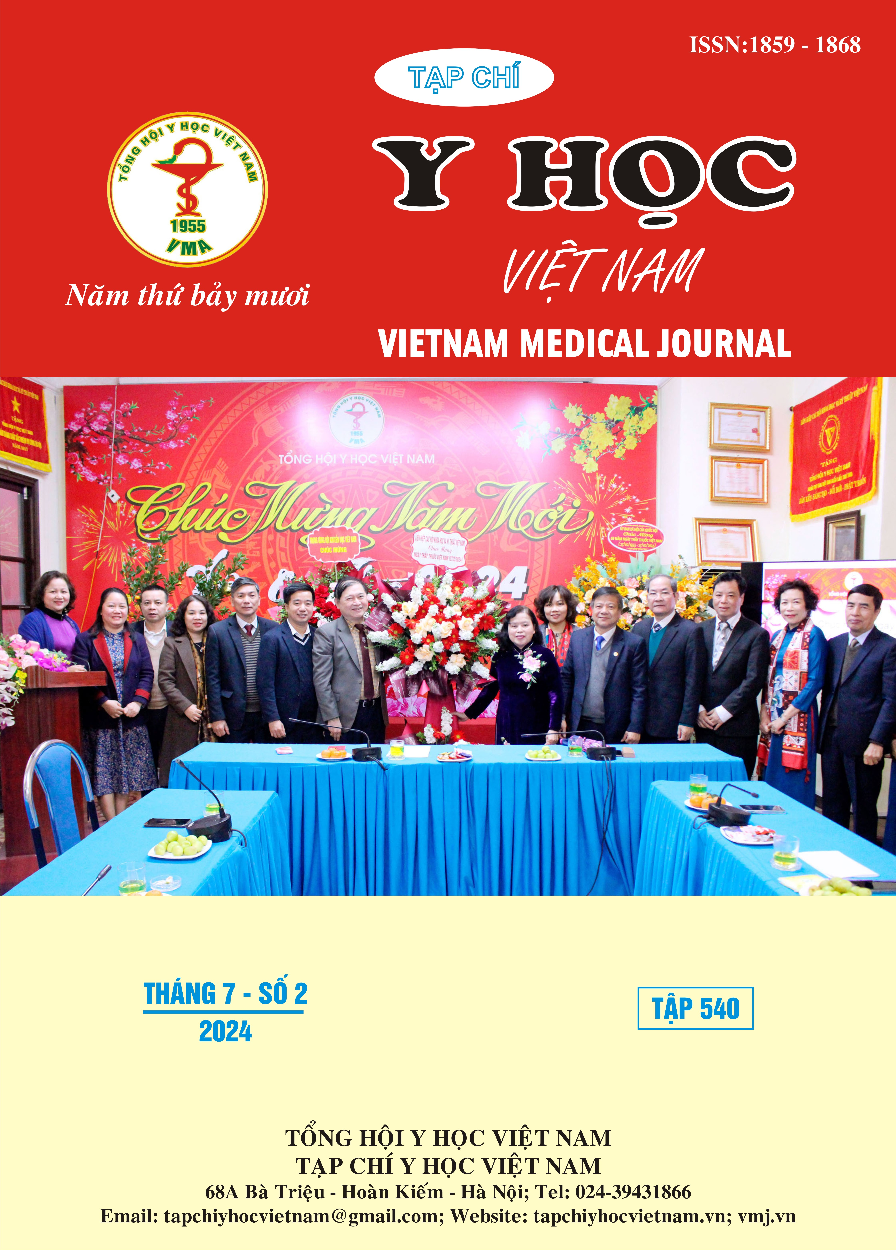ASSESSING THE EARLY RESULTS OF SURGICAL TREATMENT OF PERITONITIS DUE TO PERFORATION OF THE COLONIC DIVERTICULUM AT PEOPLE’S HOSPITAL 115
Main Article Content
Abstract
Objective: Describe the clinical and subclinical characteristics of peritonitis due to perforation of the colonic diverticulum and assess the early results of surgical treatment of peritonitis due to perforation of the colonic diverticulum at People’s Hospital 115 from 2020 - 2022. Method: A retrospective descriptive study of a series of cases. Results: There were 38 male-to-female patients; the rate was 2.13; 26 cases of left colon diverticulitis perforation and 12 cases of right colon diverticulitis perforation. The mean age was 58.27 years old. Abdominal pain was the most common clinical symptom (100%). The most common location of abdominal pain was the lower half of the abdomen and was easily misdiagnosed with other causes of abdominal pain. Computer tomography images detected the diagnosis of perforated diverticulitis was 76.7%, and the most common lesion on abdominal CT image is the image of fat infiltration around the colon (93%) and thickening of the colon wall (80%). Hinchey III degree (fecal peritonitis) accounted for 63.2%. Most patients had a segment of the colon removed and had a colostomy (42.6%), and a few had end-to-end bowel anastomosis in the same operation (23.7%). Cutting and suturing the diverticulum and making an artificial anus at the perforation site accounted for 10.5% and 7.9%, respectively. The rate of laparoscopic surgery was 21.3%, open surgery accounted for 74.5%, and the conversion rate from laparoscopic to open surgery was 4.3%. The mean treatment time after surgery was 10.8 ± 5.9 days. Early postoperative complications occurred in 9 patients (23.7%), of which eight patients had surgical wound infections, and one patient had abdominal wall dehiscence (2.6%) and had to undergo reoperation for abdominal wall reinforcement. There were no deaths. Conclusion: Abdominal CT scan is a high-sensitivity imaging diagnostic method (76.7%), helping to support preoperative diagnosis and early treatment decisions for patients. The surgical treatment of colonic diverticulum perforation is very diverse depending on the location of the diverticulum and the degree of injury.
Article Details
Keywords
Peritonitis, perforation of the colonic diverticulum, surgical treatment.
References
2. Phạm Ngọc Hoan, Nguyễn Mạnh Dũng, Đỗ Bá Hùng, Dương Văn Hải, (2018),Tạp chí Y Học TPHCM, 22 (2), tr. 513-520.
3. Nguyễn Thanh Phong, Đỗ Bá Hùng, (2016), "Kết quả phẫu thuật điều trị thủng túi thừa đại tràng", Tạp chí Y Học TPHCM, 20, tr. 283- 289.
4. Paik P S, Yun J A, (2017), "Clinical Features and Factors Associated With Surgical Treatment in Patients With Complicated Colonic Diverticulitis", Ann Coloproctol, 33 (5), pp. 178-183.
5. Angenete E, Thornell A, Burcharth J, Pommergaard H C, et al, (2016), "Laparoscopic Lavage Is Feasible and Safe for the Treatment of Perforated Diverticulitis With Purulent Peritonitis: The First Results From the Randomized Controlled Trial DILALA", Ann Surg, 263 (1), pp. 117-122.
6. Sessa B, Galluzzo M, Ianniello S, Pinto A, et al, (2016), "Acute Perforated Diverticulitis: Assessment With Multidetector Computed Tomography", Semin Ultrasound CT MR, 37 (1), pp. 37-48.
7. Abboud M. E., Frasure S. E., Stone M. B. (2016), "Ultrasound diagnosis of diverticulitis". World J Emerg Med, 7 (1), pp. 74-6.
8. Vermeulen J, Lange J F, (2010), "Treatment of Perforated Diverticulitis with Generalized Peritonitis: Past, Present, and Future", World J Surg, 34 (3), pp. 587-593.


